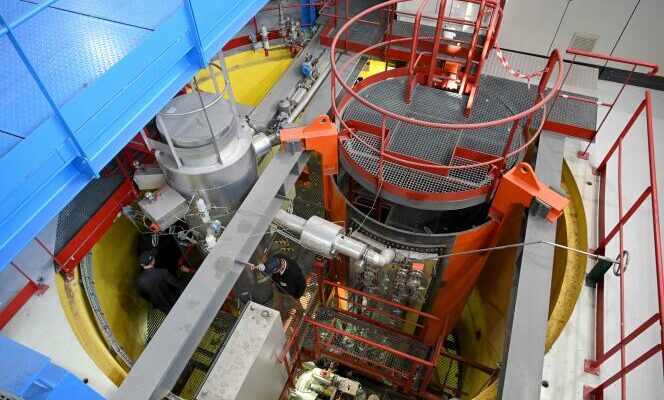The blow from the United States was as harsh as it was quickly absorbed by the supporters of small modular reactors, convinced that these low-power nuclear power plants have the future ahead of them. John Hopkins, CEO of the company NewScale Power, announced on Thursday, November 9, the abandonment of the project “small modular reactor” (SMR) planned in Idaho, the local authorities not having been numerous enough to support an initiative – called “Carbon Free Power Project” (CFPP) – the cost of which had exploded in a few months and with it the price of electricity supplied.
If the CFPP is “a dead horse”, according to Mr. Hopkins, his company has not buried other projects in the United States and Europe. Terra Power, from Microsoft founder Bill Gates, has not given up either. And Sam Altman, boss of the artificial intelligence company OpenAI, is determined to list Oklo, his start-up which wants to revolutionize nuclear power. In the meantime, only two public giants, the Chinese CNNC and the Russian Rosatom, operate an SMR, but nearly 80 projects are being developed around the world.
Their promoters, often private, see multiple advantages in low-carbon technologies which are inspired by nuclear reactors for propelling ships or submarines: the modules are manufactured in a factory and assembled on site, reducing construction time and costs; they do not always need to be connected to the electricity network; they benefit from passive safeguards which prevent the nuclear reaction from racing and the melting of the core; breeder reactors burn waste; they are suitable for powering industrial sites, replacing coal, gas or fuel oil power plants that emit CO2or even provide district heating or seawater desalination.
A very mastered technology
Until now, France has favored large reactors. The latest, the EPR (1,650 megawatts) is the most powerful in the world. It took the France 2030 plan, which earmarked 1 billion euros for this equipment, and above all the relaunch of a nuclear program by the President of the Republic, Emmanuel Macron, in February 2022, for manufacturers to look at SMRs with more interest. And that EDF created, in March, a subsidiary, NuWard (for “nuclear forward”), based on an existing program of the same name.
With the CEA, Framatome, Tractebel, Naval Group and TechnicAtome, two specialists in boiler rooms for nuclear-powered submarines, EDF plans the construction, from 2030, of a power plant equipped with two 170 MW pressurized water reactors, a technology that has been well mastered for over sixty years. The CEA is also working on two fast neutron SMR “concepts” and Orano on another technology to reduce waste from current power plants.
You have 55% of this article left to read. The rest is reserved for subscribers.
